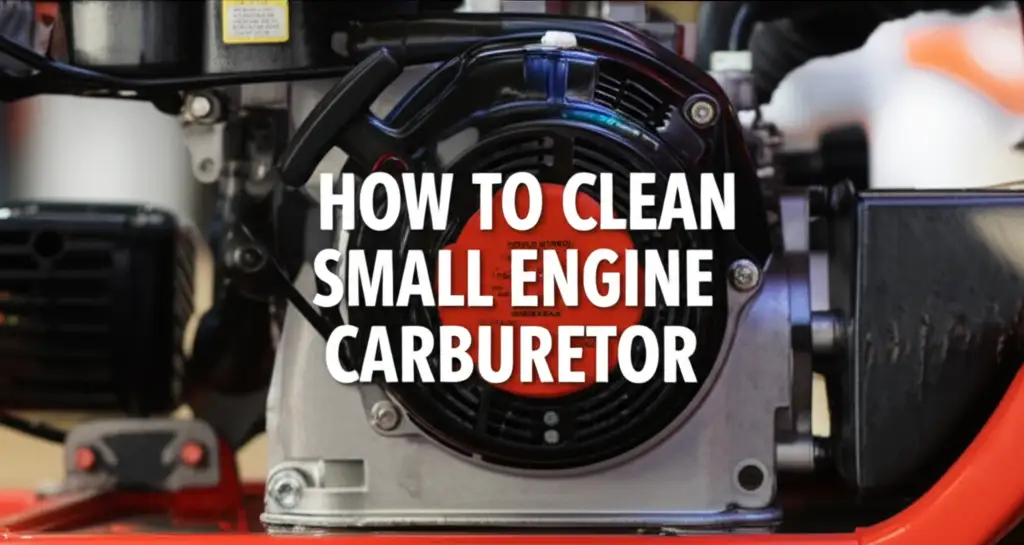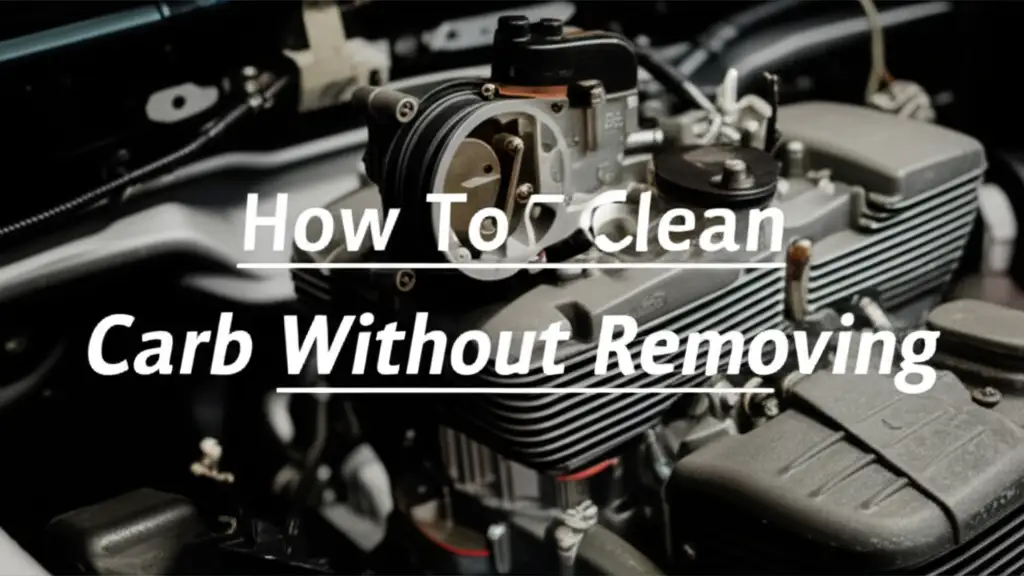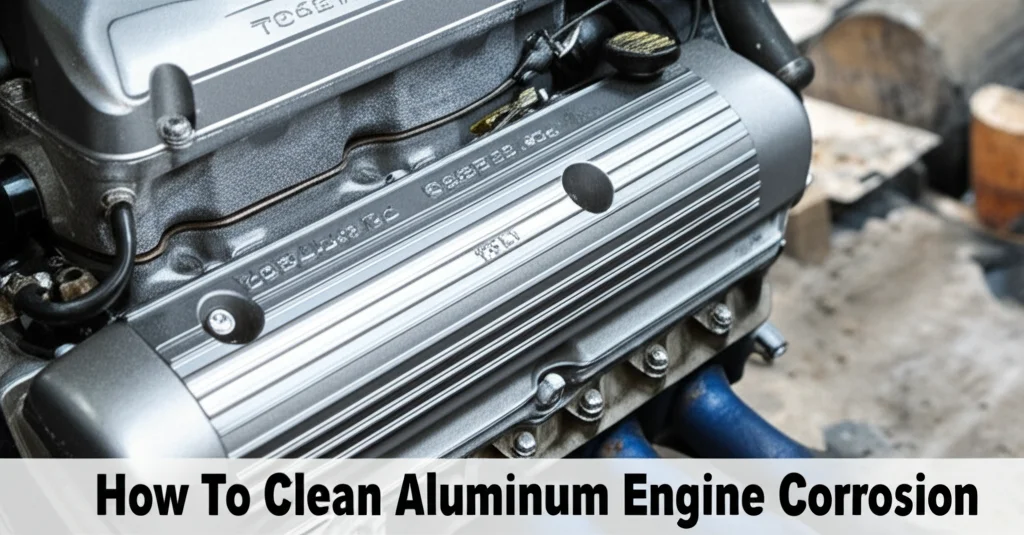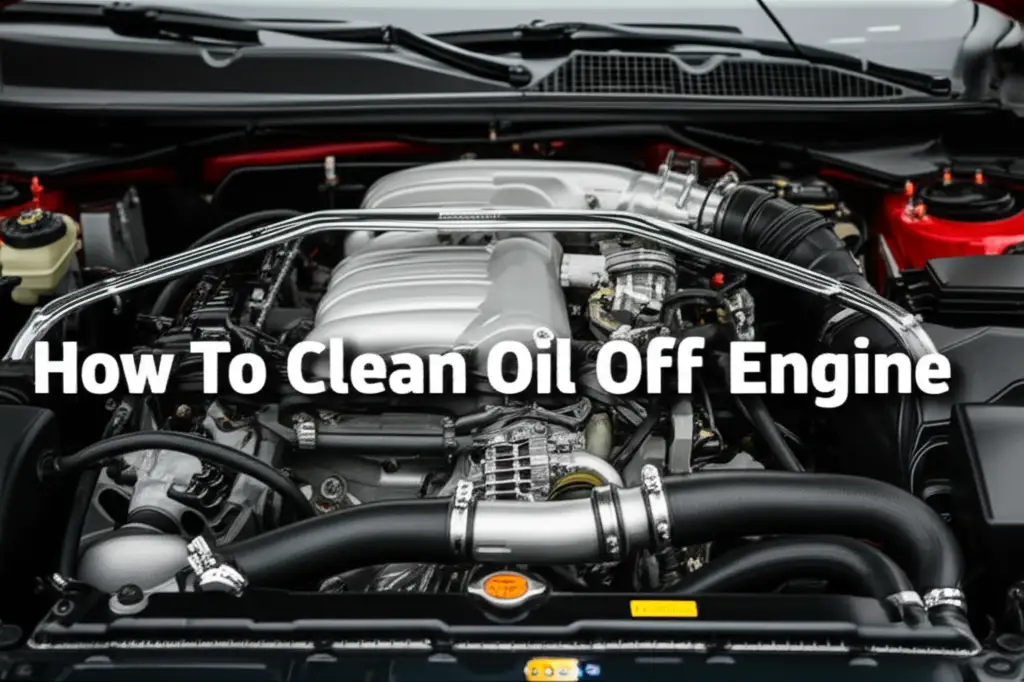· Engine Maintenance · 19 min read
How To Clean Air Cooled Engine Fins
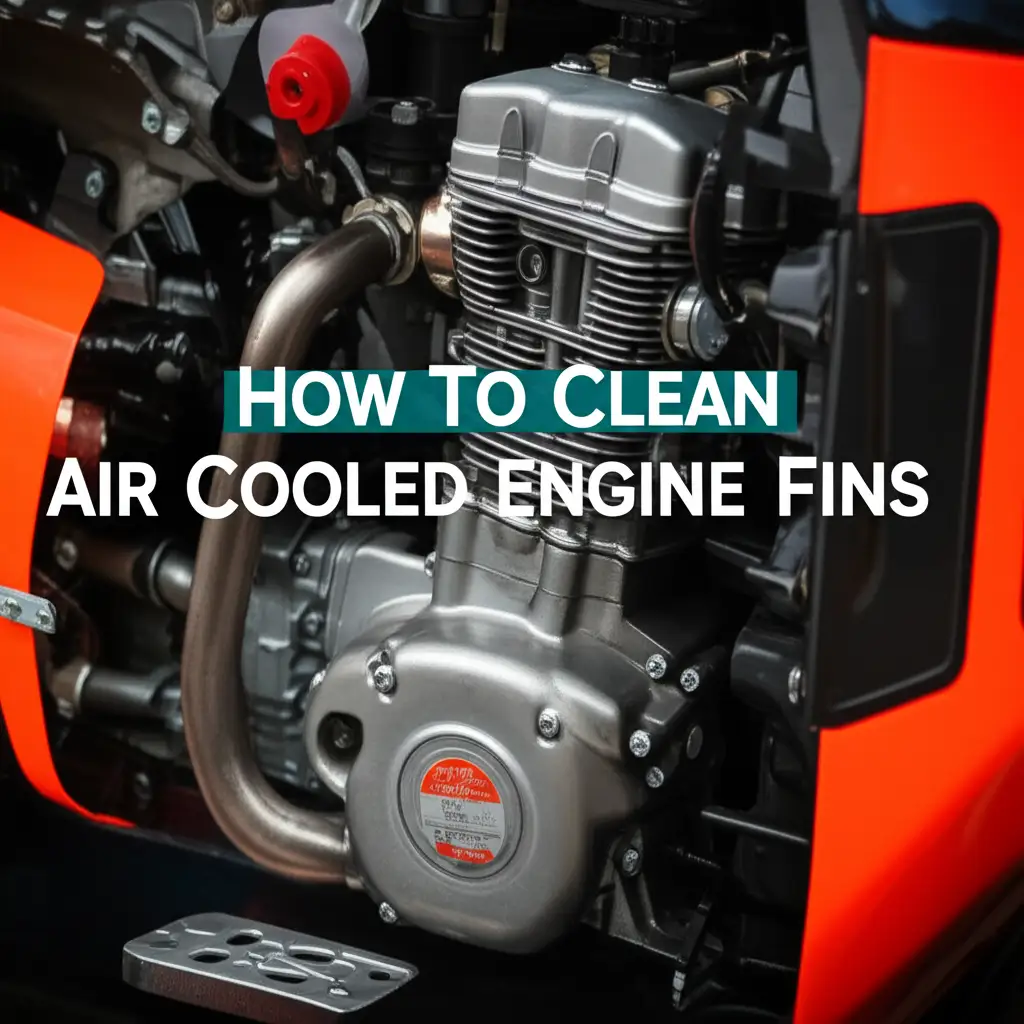
Boost Engine Life: Clean Air Cooled Fins
Air-cooled engines are common in many machines we use daily. Think about your motorcycle, lawnmower, or generator. These engines rely on airflow over their fins to stay cool. Over time, dirt, dust, and debris build up on these fins. This buildup acts like an insulating layer. It stops heat from leaving the engine. A dirty engine runs hotter. This can reduce power and shorten engine life. My goal today is to show you how to effectively clean air cooled engine fins. We will cover necessary tools, safety steps, and a simple cleaning process. We will also discuss how to keep your fins clean for a long time.
Takeaway:
Keeping engine fins clean helps your engine run cool and last longer.
- Remove loose debris first.
- Use a brush and compressed air.
- Wash with a degreaser if needed.
- Rinse and dry the fins completely.
To clean air cooled engine fins, first ensure the engine is off and cool. Use compressed air or a soft brush to remove loose dirt and debris. For stubborn grime, apply a specific engine degreaser, let it work, then gently scrub. Rinse with low-pressure water and allow the fins to dry fully before running the engine.
Why Clean Engine Fins? Keep Your Engine Cool
Engine fins look like small radiator parts. They stick out from the engine block. Their job is to increase the surface area of the engine. This lets more heat escape into the air. A clean engine transfers heat well. A dirty engine struggles to get rid of heat. When dirt, grass, or oil coats the fins, they cannot do their job. This causes the engine to overheat.
Overheating can cause serious engine damage. Parts wear out faster. Engine oil breaks down quickly. You might notice a loss of power. The engine may even stop working completely. Regular fin cleaning prevents these problems. It keeps your engine working at its best. It also helps your engine last many years. I have seen many engines fail because of dirty fins. Taking a little time to clean them saves you a lot of money later. It is a simple step with big benefits.
Proper airflow is very important for an air-cooled engine. The fins are designed to let air pass freely over them. This air carries away the heat. If the gaps between the fins get blocked, airflow stops. Imagine trying to breathe through a clogged filter; your engine feels the same way. Keeping the fins clear of dirt and debris ensures air moves smoothly. This keeps the engine temperature in a safe range. It also makes sure your engine performs at its peak efficiency. You might even use less fuel. This is because a cool engine works more efficiently than a hot one.
Different types of engines have air-cooled fins. Motorcycles often have large, exposed fins. Small engines on lawn mowers, generators, or pressure washers also have them. Even some older cars used air-cooled engines. The principles of cleaning remain the same for all of them. Each type of engine might collect different types of dirt. A lawn mower might get grass clippings and soil. A motorcycle might get road grime and dust. Knowing what kind of dirt you are dealing with helps choose the best cleaning method. The goal is always to clear the fins so air can pass through.
Essential Tools and Cleaning Products
Having the right tools makes cleaning engine fins much easier. You do not need many special items. Most of these things you might already own. Gathering them before you start saves time. It also helps you complete the job safely. I always make a checklist of my tools first. This ensures I do not forget anything important.
First, you will need something to remove loose dirt. A stiff brush is great for this. Old toothbrushes or small wire brushes work well. Just make sure the bristles are not too harsh. You do not want to damage the fins. Next, you will need compressed air. A small air compressor or even canned air can blow out dirt. This gets into tight spots where brushes cannot reach. For deep cleaning, a degreaser is helpful. Engine degreasers cut through oil and grease. You can find these at auto parts stores. Some people use simple green or dish soap diluted in water. Make sure any product you use is safe for metal surfaces.
You also need a water source. A garden hose with a spray nozzle is good. Avoid high-pressure washers, as they can bend fins. A bucket of water and a sponge also work for rinsing. Eye protection is very important. Goggles or safety glasses protect your eyes from flying debris and chemicals. Gloves protect your hands from dirt and cleaning solutions. Finally, old rags or towels are useful for drying. You want to make sure the fins are completely dry when you finish. Having all these items ready before you start cleaning saves time.
Here is a simple list of tools I recommend:
- Stiff-bristled brush: An old toothbrush or a small utility brush is perfect for scrubbing.
- Compressed air: A can of compressed air or an air compressor with a nozzle helps blow out debris. You might also use an air compressor to clean other engine parts, for instance, a drain line. It is useful to know how to clean AC drain line with air compressor for various cleaning tasks.
- Engine degreaser or mild detergent: Choose a product safe for engine components.
- Garden hose with low-pressure nozzle: For rinsing. Avoid high pressure that can bend fins.
- Safety glasses or goggles: To protect your eyes from debris and chemicals.
- Work gloves: To protect your hands.
- Old rags or microfiber towels: For drying and wiping.
- Flashlight: To inspect hard-to-see areas.
Having these tools ready helps make the cleaning process smooth and safe. I always make sure my tools are clean before I start. This prevents cross-contamination. Dirty tools can spread grime instead of removing it.
Safety First: Preparing for the Clean
Before you begin cleaning, safety is key. Working around an engine requires some precautions. My priority is always to keep myself safe. A few simple steps prevent accidents. Ignoring these steps can lead to injury or damage to your engine. Take a few minutes to prepare properly.
First, make sure the engine is completely off and cool. Never clean a hot engine. Hot surfaces can burn you. Cleaning products can also react badly with heat. Let the engine sit for at least an hour after use. This ensures all parts have cooled down. I usually wait even longer if I can. It is better to be safe than sorry.
Next, disconnect the spark plug wire. This prevents the engine from starting by accident. A surprising engine start can cause serious injury. Simply pull the rubber boot off the spark plug. If your engine has a battery, disconnect the negative terminal. This stops any electrical power from flowing. This step is especially important if you plan to use water. Water and electricity do not mix. You want to avoid any short circuits.
Move your equipment to a well-ventilated area. If you are using strong cleaning solutions, make sure you have fresh air. This prevents you from breathing harmful fumes. Work outside if possible. Lay down old newspapers or cardboard under the engine. This catches any dirt or chemicals. It makes cleanup easier later. It also protects your driveway or garage floor. I always put down a tarp to protect my work area. This shows respect for my tools and space.
Wear your safety gear. Put on your safety glasses. Wear your work gloves. This protects your eyes from flying debris. It also protects your hands from harsh chemicals. If you are sensitive to dust, consider wearing a dust mask. These simple safety measures protect you. They help you focus on the cleaning task. A safe worker is a good worker. Do not skip these steps.
Step-by-Step Guide to Cleaning Engine Fins
Now we get to the actual cleaning process. This part is simple but requires patience. Do not rush through the steps. A thorough cleaning makes a big difference. I follow these steps every time I clean my engine fins. This method gives me the best results.
H3: Removing Loose Debris
Start by removing any large pieces of debris. Grass, leaves, and mud can get stuck between the fins. Use your stiff-bristled brush to scrape these off. A small plastic or wooden stick can help dig out stubborn bits. Be gentle. You do not want to bend the delicate fins. Work slowly around the entire fin area. Get as much visible dirt off as possible. This first step makes the next steps easier. It also saves your degreaser for the tough grime. I always take my time here. It sets a good foundation for the rest of the clean.
Next, use compressed air to blow out dust and fine dirt. This is where compressed air shines. It gets into the narrow spaces between the fins. Hold the nozzle a few inches away. Blow air parallel to the fins, not directly into them. This helps move the dirt out. Work from top to bottom. This lets gravity help you. Dust and dirt will fall away. Compressed air is very effective for removing even fine black dust, similar to how one might clean black dust around air vents. Repeat this step a few times until no more dust comes out. I often see a cloud of dirt fly out. This tells me how much good the air is doing.
H3: Applying Cleaner and Scrubbing
Once loose debris is gone, apply your chosen cleaner. If using an engine degreaser, follow the product instructions. Spray it evenly over the fins. For a mild detergent solution, use a spray bottle or a sponge to apply it. Let the cleaner sit for a few minutes. This allows it to break down oil and grime. Do not let it dry on the fins. This can leave streaks or residue. I usually set a timer for the recommended soak time. This ensures the cleaner does its job without drying.
Now, it is time to scrub. Use your stiff brush or old toothbrush. Gently scrub the fins. Work in the direction of the fins. This helps remove the loosened dirt. Pay attention to the tight spots. The goal is to dislodge all the caked-on grime. If the cleaner starts to dry, reapply a little more. Be careful not to use too much force. Bending the fins can reduce their effectiveness. I sometimes use a small nylon brush for very narrow gaps. This helps me get every bit of dirt out.
H3: Rinsing and Drying
After scrubbing, rinse the fins thoroughly. Use your garden hose with a low-pressure setting. Avoid high-pressure nozzles. High pressure can bend or damage the delicate fins. Start rinsing from the top of the engine. Let the water flow down over the fins. This washes away the dirt and cleaner. Make sure all soap residue is gone. Any leftover soap can attract new dirt later. Rinse until the water runs clear. I take extra time here to ensure all cleaner is removed.
Finally, dry the fins completely. You can let the engine air dry if you have plenty of time. For faster drying, use compressed air again. Blow air over the fins to remove water droplets. Wipe down accessible surfaces with an old rag or towel. It is important that the engine fins are fully dry before you run the engine again. Moisture can lead to rust. It can also cause problems if it gets into electrical components. A dry engine means a safe engine. I often leave the engine in the sun for an hour or two. This ensures complete dryness.
Handling Stubborn Dirt and Grime
Sometimes, engine fins have really stubborn dirt. This might be baked-on oil or old, caked-on mud. The basic cleaning steps might not be enough. Do not worry. There are ways to handle this. It just takes a little more effort. I have faced these challenges many times. With the right approach, even the toughest grime comes off.
One option for stubborn dirt is a stronger degreaser. There are specific heavy-duty engine degreasers available. Read the label carefully. Make sure it is safe for your engine’s materials. Apply it more generously to the tough spots. Let it sit for the maximum recommended time. This gives it more time to break down the grime. Some degreasers work best on warm (but not hot) engines. Check the instructions. Always wear extra protection when using stronger chemicals. I find that a good quality degreaser often does most of the hard work.
For truly stuck-on debris, you might need a specialized brush. Some brushes are designed with very stiff bristles or even soft brass wires. These can provide more scrubbing power. Use them carefully to avoid scratching or bending the fins. For example, a small, stiff detail brush can get into very tight spaces. Be gentle and work slowly. I often use a small, non-abrasive pick to loosen large clumps of caked dirt before scrubbing. Patience is important here. You want to remove the dirt, not damage the fins.
Steam cleaners can also be very effective. A low-pressure steam cleaner can loosen tough dirt without harsh chemicals. The heat from the steam helps melt away grease. It then makes it easier to wipe or rinse away. If you use a steam cleaner, keep the nozzle moving. Do not hold it in one spot for too long. Ensure the engine is completely cool before using steam. Always follow the steam cleaner’s instructions for use on engine parts. I have used a steam cleaner on old engines with great success. It is a good option if you have one available.
Remember, several applications might be necessary. You may need to spray, scrub, and rinse multiple times. Do not expect all the grime to come off in one go. Sometimes, a second or third treatment makes all the difference. It is an ongoing process for truly neglected engines. I break it down into smaller sections. I work on one part of the engine at a time. This keeps me from getting overwhelmed.
Post-Cleaning Care and Maintenance Tips
Cleaning your engine fins is a great start. But the job is not over when the fins are sparkling. Regular care keeps them that way. It also helps your engine stay healthy overall. I always recommend a maintenance routine. This prevents dirt from building up again quickly. A little regular effort saves a lot of deep cleaning later.
After cleaning, take time to inspect the fins. Look for any bent or damaged fins. You can gently straighten slightly bent fins with a small, flat-bladed screwdriver or a fin comb. Be very careful. Bent fins reduce airflow. They make the cleaning effort less effective. Also, check for any areas you might have missed. Sometimes, dirt hides in tricky spots. A quick visual check ensures a complete job. I always use a flashlight to get a good look at all the fins.
Establish a regular cleaning schedule. How often you clean depends on how you use your engine. If you ride your motorcycle on dusty roads, you will need to clean the fins more often. If your lawnmower cuts wet grass, it will get dirty faster. For most general use, cleaning fins every few months is a good idea. For heavy use, you might need to clean them once a month. Make it a part of your regular maintenance routine. Just like cleaning the air filter on a lawn mower, fin cleaning is vital for engine health. Knowing how to clean air filter on lawn mower can be a part of your overall maintenance schedule.
Consider using a protective spray. Some products are designed to help repel dirt and grime. They create a thin barrier on the fins. This makes future cleaning easier. Make sure any product you use is safe for engine temperatures. Apply it evenly after the fins are completely dry. This provides an extra layer of protection. I use these sprays on my outdoor power equipment. They really do help keep the dirt from sticking.
Keep your engine area clean in general. If the rest of the engine is covered in oil and dirt, it will quickly transfer to the fins. Regularly wipe down the engine block. Address any oil leaks promptly. Clean up spills right away. A clean engine bay reduces the source of fin contamination. This makes fin cleaning less frequent. It is about total engine health. A clean environment helps all parts work better. This proactive approach saves time and keeps your engine running smoothly.
Common Mistakes to Avoid
Even simple tasks can go wrong if you are not careful. When cleaning engine fins, certain mistakes can cause damage. Avoiding these common errors ensures a safe and effective clean. I have seen these mistakes happen. They can turn a simple cleaning job into a repair job. Learn from these tips to protect your engine.
First, do not use a high-pressure washer. It is tempting to blast the dirt away quickly. However, the strong water pressure can easily bend the thin metal fins. Bent fins block airflow. They can even make cooling worse than before. Stick to a low-pressure garden hose. If you must use a pressure washer, stand far back and use a very wide spray pattern. But I strongly advise against it for fins. I only use low pressure for rinsing.
Second, do not use harsh or corrosive chemicals. Some industrial cleaners contain acids or strong solvents. These can damage the metal of the fins. They can also strip paint or corrode seals and gaskets. Always choose a cleaner specifically designed for engine parts. Test any new cleaner on a small, hidden area first. This checks for adverse reactions. I always read product labels carefully. This helps me choose the right cleaner.
Third, never clean a hot engine. We covered this in safety, but it is worth repeating. Hot surfaces cause burns. Hot engines can also react poorly with cold water or chemicals. This can cause warping or cracking. Always let the engine cool down completely. This simple wait protects both you and your engine. Rushing this step is a common mistake.
Fourth, do not ignore drying. Leaving water on the fins can lead to rust. Water can also seep into electrical connections. This causes starting problems or corrosion. Always make sure the fins are completely dry before you run the engine. Use compressed air and towels. If possible, let the engine air dry in the sun for an hour or two. This ensures all moisture is gone. A damp engine can lead to long-term problems.
Finally, do not be too aggressive. While you want to remove dirt, being too rough can cause damage. Scrub gently but firmly. Do not scrape or dig too hard with metal tools. The fins are delicate. They can break or bend. Gentle care keeps them in good shape. It ensures they can do their job of cooling your engine for many years.
FAQ Section
Q1: How often should I clean my air-cooled engine fins? A1: The cleaning frequency depends on engine use. For daily or dusty operation, clean fins every month or two. For lighter use, every three to six months is good. Regular inspection helps you decide. If you see visible dirt buildup, it is time to clean them. Proactive cleaning prevents major issues.
Q2: Can I use a pressure washer to clean engine fins? A2: No, avoid using a high-pressure washer directly on engine fins. The strong water stream can easily bend or damage the delicate fins. This reduces their ability to cool the engine. Use a garden hose with a low-pressure nozzle for rinsing instead. This is much safer for the fins.
Q3: What kind of degreaser is best for engine fins? A3: Use an engine degreaser specifically made for automotive or small engine parts. These are designed to be safe for metals and hoses. You can also use a mild detergent mixed with water. Always test any new cleaner on a small spot first. Read the product instructions carefully before use.
Q4: What if my engine fins are bent? Can I fix them? A4: You can try to gently straighten slightly bent fins. Use a small, flat-bladed screwdriver or a special fin comb. Work slowly and carefully. Do not use too much force. Severely bent or broken fins are harder to fix and may reduce cooling. Replace parts if damage is too bad.
Q5: Is it safe to use water on an engine? A5: Yes, it is safe to use water on the outside of an engine for cleaning. However, make sure the engine is off and cool. Disconnect the spark plug wire and battery (if applicable) first. Avoid spraying water directly into air intakes, carburetors, or electrical components. Dry the engine completely afterward to prevent rust.
Q6: Does cleaning engine fins improve engine performance? A6: Yes, cleaning engine fins significantly improves engine performance. Clean fins allow for better heat dissipation. This keeps the engine running at its optimal temperature. A cooler engine maintains power, runs more efficiently, and reduces wear and tear on internal components. It helps extend the engine’s lifespan.
Conclusion
Cleaning air cooled engine fins is a vital part of engine maintenance. It is a simple task that offers big rewards. A clean set of fins lets your engine cool properly. This prevents overheating. It helps your engine perform at its best. It also helps your engine last longer. I have always believed that basic care saves major repairs. By following the steps outlined today, you can keep your engine in top shape.
Remember to gather your tools first. Always put safety first. Use the right cleaning methods for loose dirt and stubborn grime. Finish by rinsing and drying completely. A little regular care goes a long way. Make fin cleaning a part of your engine’s maintenance schedule. Your engine will thank you with reliable performance. It will also serve you for many years to come. Take action now. Keep those fins clean. Your engine depends on it.
- engine cleaning
- air cooled engine
- engine maintenance
- fin care

